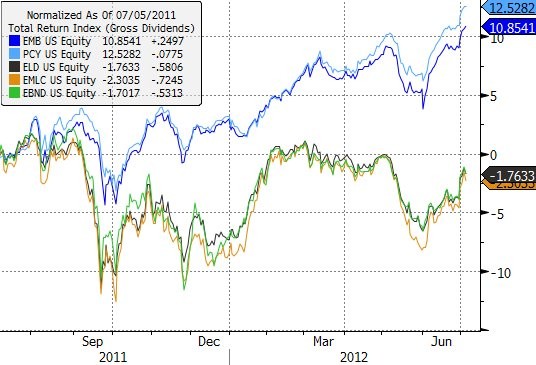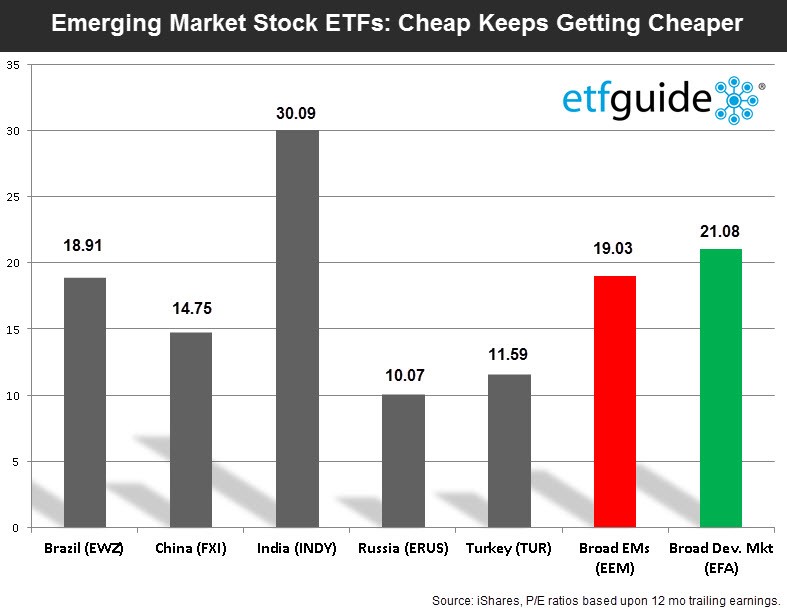Emerging market ETFs at risk of extinction
Post on: 16 Март, 2015 No Comment

July 15, 2012 at 12:00 pm by Steven Orlowski
Just as new emerging market ETFs can be created, so they can be eliminated. One very important trading and investing consideration is liquidity. Can you find a seller for your shares when you need to, or are you stuck with shares you cant sell?
ETF graveyard is silently recriminating your lack of interest
Before buying emerging market ETFs you must consider the average daily trading volume, or how many shares have been traded on an average day. An ETF that only trades a few hundred shares per day is usually a poor choice. Securities with low average volume and/or trade infrequently (not every day) also usually trade with a wider spread the difference between the buyers price (the bid) and the sellers price (the offer).
A wide spread means you start your share ownership at a deficit. A very liquid security may trade with a $.01 spread. For example, I pay a seller $10.00 per share while the bid is $9.99. But an illiquid security can trade with much wider spreads. If an ETF has a $.50 spread and I pay $10.00 per share, the ETF must appreciate by $.50 (5%) for me just to break even. Thats a disadvantage I like to avoid.
Lets look at a few emerging market ETFs that would be interesting if not for their illiquidity, which puts them at risk of being eliminated.
For our first ETF, the decision has already been made to liquidate it. The Board of Trustees of IndexIQ ETF Trust has authorized the orderly liquidation of the IQ South Korea Small Cap ETF (SKOR. quote ). The recent 10 day average volume was only 780.4 shares. Its tough to sell a round lot with that little volume.
Its a shame its being liquidated because I think the fund is a great idea. SKOR sought:
to track, before fees and expenses, the performance of the IQ South Korea Small Cap Index. The market cap-weighted Index seeks to provide investors with a means of tracking the overall performance of the small capitalization sector of publicly traded companies domiciled and primarily listed on an exchange in South Korea.

There are small cap emerging market ETFs out there for other countries that have been successful. Perhaps this fund was just ahead of its time, and I am sure well see a similar one launched in the future.
The next ETF is not being liquidated to my knowledge yet, but probably will be. The Direxion Daily BRIC Bear 3x Shares (BRIS. quote ) is an ETF that seeks daily investment results, before fees and expenses, of 300% of the inverse (or opposite) of the performance of the BNY Mellon BRIC Select ADR Index. There are a slew of funds like this which provide risk and reward potential with the aggressive use of leverage. But with a 10 day average volume of 3,200 shares, this would be a tough one to use effectively. Its not a buy-and-hold fund. I would not trade it; the risk is too great to get stuck with the shares. And with the amount of leverage involved massive losses could pile up very quickly. Watch this one follow SKOR into the emerging market ETFs graveyard.
The last one is the MSCI China Small Cap Index Fund (ECNS. quote ). This ETF seeks investment results that correspond generally to the price and yield performance, before fees and expenses, of the MSCI China Small Cap Index. This is interesting because in the case of ECNS there is an alternative. The Claymore/AlphaShares China Small Cap ETF (HAO. quote ) is a similar fund. Average daily volume for HAO is 78,500 shares, versus 1,800 shares for ECNS. There are differences in these emerging market ETFs, so depending on your approach (trader/investor) it may make sense to take a closer look. But for traders, the differences may not matter. The chart below illustrates the near 100% correlation between the two funds.
I am surely more comfortable trading HAO with some volume than ECNS with very little, which I could get stuck with. Since HAO exists, and is apparently getting a bigger percentage of the China small cap business, ECNS is at risk of liquidation.
The bottom line: pay attention to volume, understand liquidity risk and be aware of better alternatives. There is an alternative for the majority of ETFs, including emerging market ETFs.














